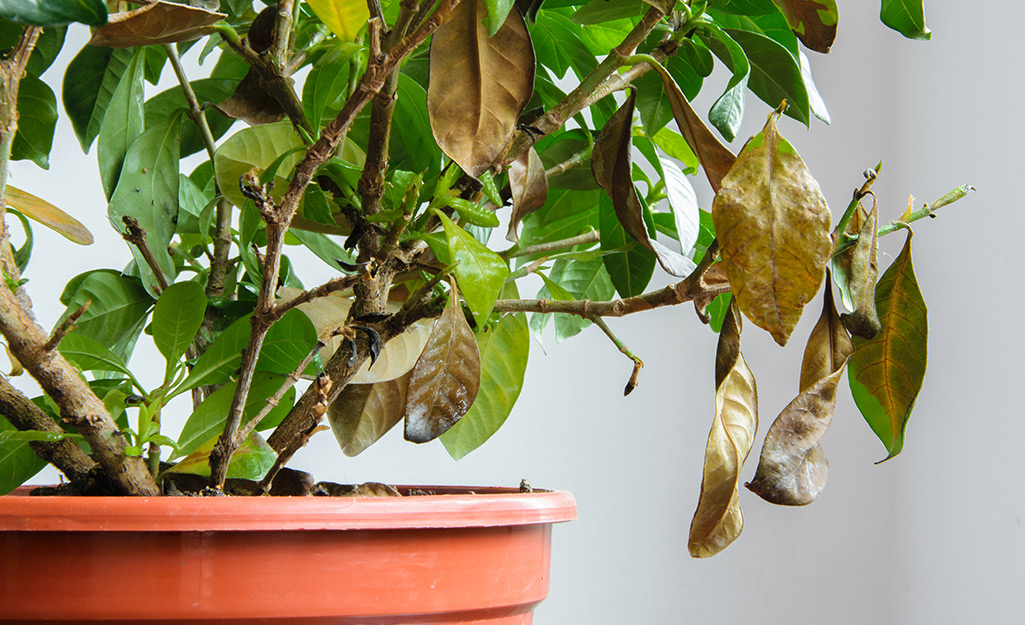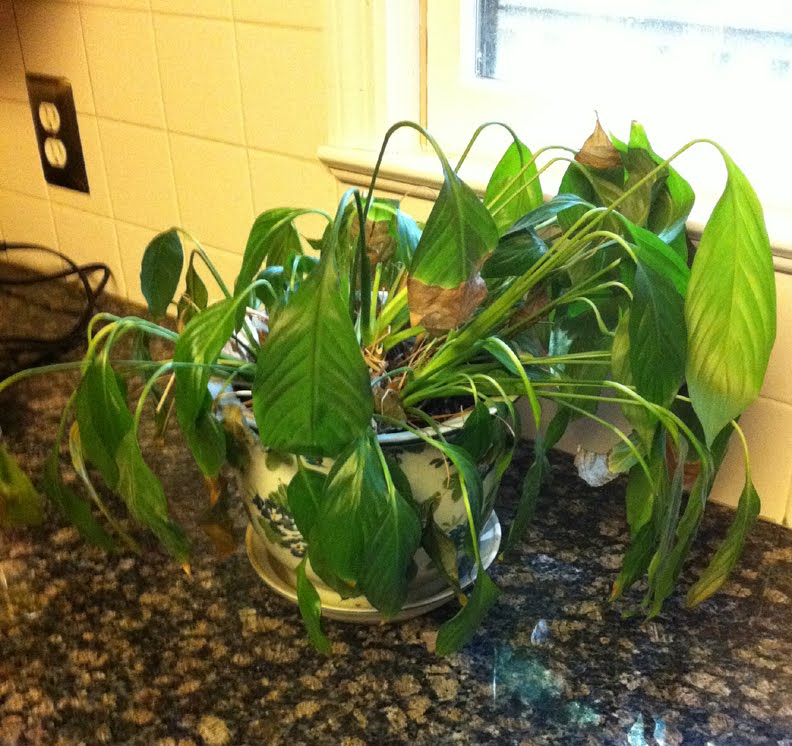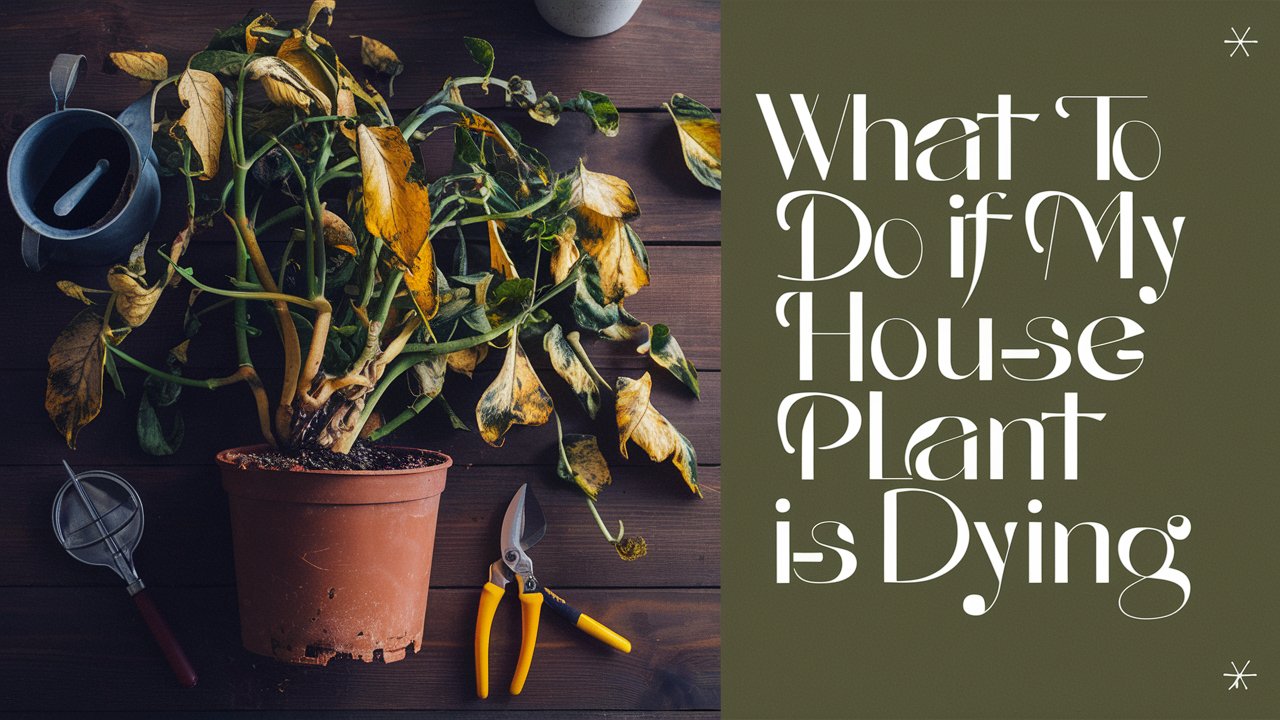Ensure your house plant has proper light and water. Check for pests and adjust the soil or pot if needed.
House plants can brighten any room, but they sometimes struggle to thrive. A dying plant can be distressing, yet there are steps to revive it. Start by assessing the light exposure and water routine. Too much or too little of either can harm the plant.
Inspect the leaves and soil for signs of pests or disease. Repotting may be necessary if the plant has outgrown its container. Proper care and timely adjustments can restore your plant’s health, making your indoor space lively again. Understanding the plant’s needs is key to maintaining its vitality.
Signs Your House Plant Is Struggling
Sometimes, house plants give signs they are not doing well. These signs can help you save your plant. Here are the key indicators to watch for.
Yellow Leaves
Yellow leaves mean your plant is unhappy. This could be from too much water or not enough. Overwatering is a common issue. Check the soil. If it’s too wet, let it dry out before watering again.
Drooping Stems
Drooping stems are another sign of trouble. This could mean your plant is thirsty. It might also mean the plant is getting too little light. Check the soil and move your plant to a brighter spot if needed.
Dry Soil
Dry soil can make your plant struggle. Plants need water to live. Check the soil regularly. If it’s dry, water your plant. Be careful not to overwater.

Credit: www.homedepot.com
Common Mistakes In Plant Care
Many houseplants die due to common care mistakes. These errors are easily avoidable. Knowing what to look for can save your plant. Let’s explore some frequent pitfalls in plant care.
Overwatering
Overwatering is a frequent mistake. Too much water can drown the roots. This leads to root rot. Always check the soil before watering. Insert your finger into the soil. If it feels moist, skip watering. Use pots with drainage holes. This allows excess water to escape.
| Symptom | Cause | Solution |
|---|---|---|
| Yellow leaves | Too much water | Let the soil dry out |
| Wilting | Root rot | Repot in fresh soil |
Underwatering
Underwatering is another common issue. Plants need water to survive. Dry soil can cause droopy leaves. Check your plant’s soil regularly. If the top inch is dry, it needs water. Water your plant thoroughly. Ensure water reaches the roots.
- Check soil moisture
- Water until soil is damp
- Use a moisture meter for accuracy
Improper Light
Light is vital for plants. Too much or too little light can harm them. Each plant has different light needs. Place your plant in the correct lighting. Use grow lights if natural light is insufficient. Rotate your plant weekly. This ensures even light distribution.
- Identify your plant’s light needs
- Place it in the right spot
- Adjust lighting seasonally
Remember, plants need proper care to thrive. Avoid these common mistakes. Your plants will thank you!
Immediate Steps To Save Your Plant
Is your house plant looking sad and droopy? Don’t worry! There are immediate steps you can take to save it. Follow these tips to help your green friend recover and thrive again.
Adjust Watering Habits
Overwatering or underwatering can harm your plant. Check the soil’s moisture by sticking your finger about an inch deep. If the soil feels dry, it’s time to water. If it’s still moist, wait a few days. Use a consistent watering schedule to avoid stress on the plant.
Change Location
Plants need the right amount of light. If your plant looks weak, it might need a new spot. Move it closer to a window for more light, or further away if it seems scorched. Also, avoid placing plants near air vents, which can dry them out.
Trim Damaged Parts
Dead or damaged leaves and stems can drain energy from your plant. Use clean scissors to trim away brown or yellow leaves. This helps the plant focus its energy on new growth. Regularly check and remove any unhealthy parts.

Credit: www.goodearthplants.com
Assessing Your Plant’s Environment
Is your beloved house plant looking sad and droopy? Don’t worry! The first step in reviving a dying plant is to check its environment. Small changes can make a big difference in your plant’s health. Let’s dive into three key factors: lighting conditions, humidity levels, and pot size and type.
Lighting Conditions
Light is crucial for plant growth. Ensure your plant gets the right amount of light. Different plants need different light levels. Check if your plant prefers bright, indirect, or low light. Use this table for quick reference:
| Plant Type | Light Requirement |
|---|---|
| Succulents | Bright Light |
| Ferns | Low Light |
| Peace Lilies | Indirect Light |
Move your plant closer to a window if it needs more light. Use a sheer curtain to diffuse harsh sunlight. If light is limited, consider using a grow light.
Humidity Levels
Plants need the right humidity to thrive. Most house plants prefer moderate humidity. Dry air can stress your plant. Here are some tips to increase humidity:
- Use a humidifier.
- Place a tray of water near your plant.
- Group plants together to create a humid microclimate.
Check the leaves for signs of low humidity. Brown leaf tips indicate dry air. Mist your plant daily to boost humidity.
Pot Size And Type
The pot size and type affect root growth. A pot that’s too small can restrict roots. A large pot can hold too much water. Ensure your pot has drainage holes. This prevents root rot.
Follow these steps to choose the right pot:
- Check the current pot size. Is it too snug?
- Select a pot 1-2 inches larger in diameter.
- Use a pot made of breathable material like terracotta.
Proper pot size and type ensure healthy roots. Healthy roots lead to a thriving plant!
The Right Way To Water
Knowing how to water your plants properly is essential. Many plants die from incorrect watering. Understanding the right techniques can save your plant’s life. Let’s dive into the right way to water your house plants.
Watering Techniques
Watering techniques vary between plants. Some need deep watering, others prefer light misting. Use a watering can for precise control. Ensure the water reaches the roots.
- Use room temperature water.
- Avoid wetting the leaves too much.
- Ensure good drainage to prevent root rot.
Place a tray under the pot to catch excess water. This helps maintain humidity and prevent mess.
Frequency
Watering frequency depends on the plant type and environment. Here is a simple guide:
| Plant Type | Watering Frequency |
|---|---|
| Succulents | Every 2-3 weeks |
| Tropical Plants | Once a week |
| Flowering Plants | Twice a week |
Check the soil moisture before watering again. Insert your finger 1 inch into the soil. If it’s dry, it’s time to water.
Signs Of Adequate Hydration
Knowing if your plant is well-hydrated is key. Look for these signs:
- Healthy, green leaves.
- Steady growth.
- Firm and strong stems.
If leaves turn yellow or drop, it may be overwatered. Brown, crispy edges suggest under-watering.
Adjust your watering schedule based on these signs. Observe and learn what your plant needs.
Nutrition And Soil Health
Nutrition and soil health are vital for your house plant’s survival. Poor soil or lack of nutrients can lead to a dying plant. Below, we’ll explore essential aspects of soil and plant nutrition.
Choosing The Right Soil
Choosing the right soil is the first step. Not all plants need the same soil. Some prefer well-draining soil, while others need moisture-retaining soil. Check the specific needs of your plant.
Here’s a simple table to guide you:
| Plant Type | Soil Type |
|---|---|
| Cacti | Well-draining, sandy soil |
| Ferns | Moist, loamy soil |
| Orchids | Bark-based, airy soil |
Fertilizing
Fertilizing provides essential nutrients to your plant. Use a balanced fertilizer with equal parts nitrogen, phosphorus, and potassium. Follow the instructions on the fertilizer package.
- Liquid fertilizers: Easy to apply, mix with water.
- Slow-release fertilizers: Last longer, release nutrients over time.
- Organic fertilizers: Natural, safe for the environment.
Apply fertilizer during the growing season. Avoid fertilizing in winter when plants rest.
Identifying Nutrient Deficiencies
Identifying nutrient deficiencies is crucial. Look for the following signs:
- Yellowing leaves: May indicate nitrogen deficiency.
- Poor growth: Could be a lack of phosphorus.
- Leaf spots: Might be potassium deficiency.
Adjust your fertilizing routine based on these signs. Regularly check your plant’s health.
Keeping your plant well-nourished and in the right soil can revive it. Focus on these key areas to bring your house plant back to life.
Preventive Measures For Future Health
To keep your house plants healthy, take preventive steps. Simple measures can prevent many problems. A healthy plant environment is key. Below are some helpful tips to ensure your plants thrive.
Pest Control
Pests can harm your plants quickly. Regular checks are essential. Look for small insects or unusual marks on leaves.
- Inspect plants weekly for signs of pests.
- Keep new plants isolated for a week before adding them to your collection.
- Use natural pest repellents like neem oil.
- Ensure proper air circulation around your plants.
Regular Maintenance
Regular care keeps your plants strong. Follow these simple steps to maintain them:
- Watering: Water your plants based on their needs. Overwatering can harm them.
- Pruning: Trim dead or yellowing leaves. This helps new growth.
- Cleaning: Wipe leaves with a damp cloth. Dust can block sunlight.
- Fertilizing: Use plant-specific fertilizers. Follow the recommended schedule.
Monitoring Plant Health
Regular monitoring helps detect problems early. Check your plants often for signs of distress.
| Signs | What to Look For |
|---|---|
| Leaf Discoloration | Yellow or brown leaves |
| Wilting | Drooping or limp leaves |
| Growth Stagnation | No new leaves or stems |
| Soil Issues | Mold or bad smell |
Early action is crucial. If you spot an issue, address it immediately. Healthy plants grow faster and look better.
When To Seek Professional Help
If your house plant is struggling, knowing when to seek professional help can save it. Sometimes, basic care isn’t enough. Experts can offer specialized advice and treatments.
Persistent Problems
If your plant shows persistent problems despite your best efforts, it’s time to call a professional.
- Leaves keep turning yellow.
- Wilting even after watering.
- Growth has stopped completely.
These issues may require expert diagnosis. They can identify underlying problems that are hard to spot.
Identifying Pests And Diseases
Pests and diseases can cause severe damage to your plants. Identifying them early is crucial.
| Common Pests | Visible Signs |
|---|---|
| Aphids | Sticky residue on leaves |
| Spider Mites | Webbing under leaves |
| Mealybugs | White, cotton-like spots |
If you spot any of these signs, a professional can provide effective treatments.
Advanced Care Tips
Sometimes plants need advanced care tips. Professionals can recommend specialized fertilizers, pruning techniques, and repotting methods.
- Use the right soil mix.
- Adjust light exposure.
- Ensure proper humidity levels.
Following these tips can revitalize a struggling plant. Experts can also advise on long-term maintenance to keep your plant healthy.
Frequently Asked Questions
How To Revive A Dying Indoor Plant?
Revive a dying indoor plant by watering properly, ensuring adequate light, pruning dead leaves, checking for pests, and repotting if needed.
Can House Plants Be Saved?
Yes, house plants can be saved. Identify the problem, provide proper care, and adjust watering, light, and soil conditions.
Why Are All My Houseplants Suddenly Dying?
Your houseplants may be dying due to overwatering, poor lighting, pests, or inadequate nutrients. Check for proper care routines.
Is It Too Late To Save A Dying Plant?
It’s not too late to save a dying plant. First, identify the problem: overwatering, underwatering, pests, or disease. Adjust care accordingly. Trim dead leaves and provide proper light and nutrients. Consistent attention can revive most plants.
Conclusion
Reviving a dying house plant requires patience and care. Focus on proper watering, adequate light, and suitable soil. Regularly check for pests and diseases. With consistent effort, your plant can thrive again. Remember, each plant has unique needs. Pay attention to its signals and adjust your care routine accordingly.

My mission is to help you bring the beauty of nature indoors with expert advice, detailed plant care guides, and creative design ideas.




